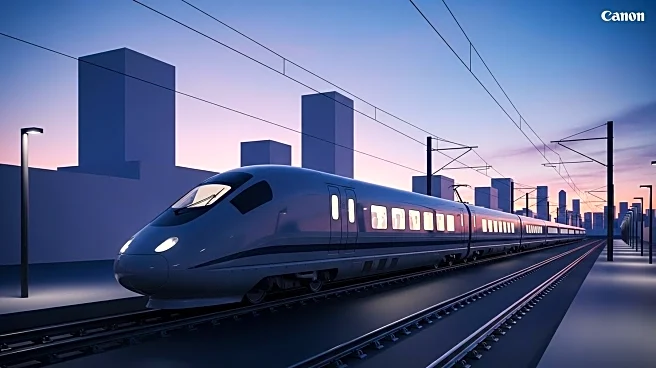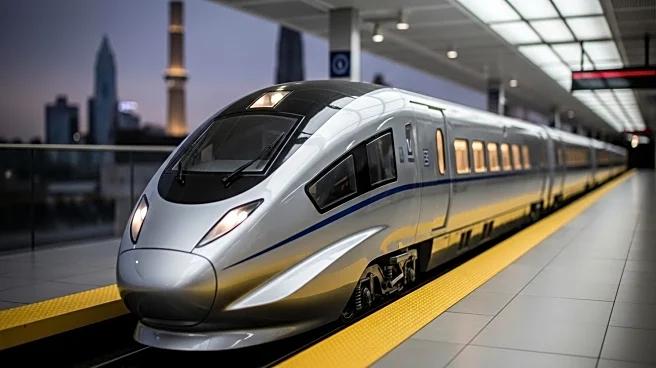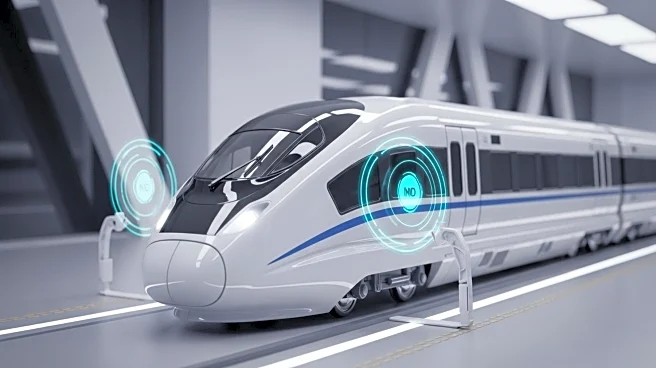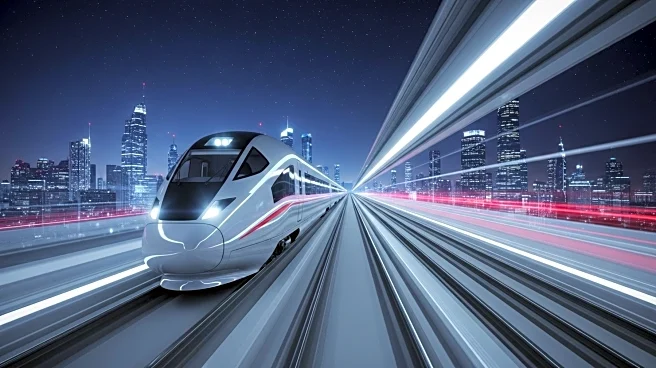What's Happening?
Amtrak has introduced its NextGen Acela high-speed train, marking a significant advancement in U.S. rail travel. The train, capable of reaching speeds up to 160 mph, is designed to improve travel along the Northeast Corridor, connecting major cities such as New York, Boston, and Washington, D.C. The NextGen Acela features modern amenities including ergonomic seats, high-speed Wi-Fi, and accessibility-focused designs like spacious restrooms. The train offers increased seating capacity with eight cars, including first-class and quiet cars. Amtrak plans to deploy 28 new trains by 2027, with five already in service. Ticket prices vary based on timing and routes, with options for Business and First Class seating.
Why It's Important?
The launch of the NextGen Acela represents a pivotal moment for U.S. transportation infrastructure, aligning with global standards of high-speed rail travel. This development is expected to enhance the efficiency and comfort of intercity travel, potentially reducing reliance on air travel for short distances. The improved amenities and faster travel times could attract more passengers, boosting Amtrak's competitiveness in the transportation sector. Additionally, the focus on accessibility and modern features reflects a commitment to inclusivity and technological advancement, which may influence future transportation projects across the country.
What's Next?
Amtrak aims to complete the rollout of all 28 NextGen Acela trains by 2027, which will require ongoing infrastructure improvements to fully utilize the train's speed capabilities. Stakeholders, including city planners and transportation authorities, may need to address track upgrades and station enhancements to support the new trains. The success of the NextGen Acela could prompt further investments in high-speed rail technology and infrastructure, potentially expanding similar services to other regions in the U.S.
Beyond the Headlines
The introduction of high-speed rail in the U.S. could have broader implications for environmental sustainability, as trains generally offer a lower carbon footprint compared to air travel. This shift may encourage more eco-friendly travel options and influence public policy towards sustainable transportation solutions. Additionally, the cultural impact of improved rail travel could foster greater connectivity between cities, enhancing economic and social interactions.












